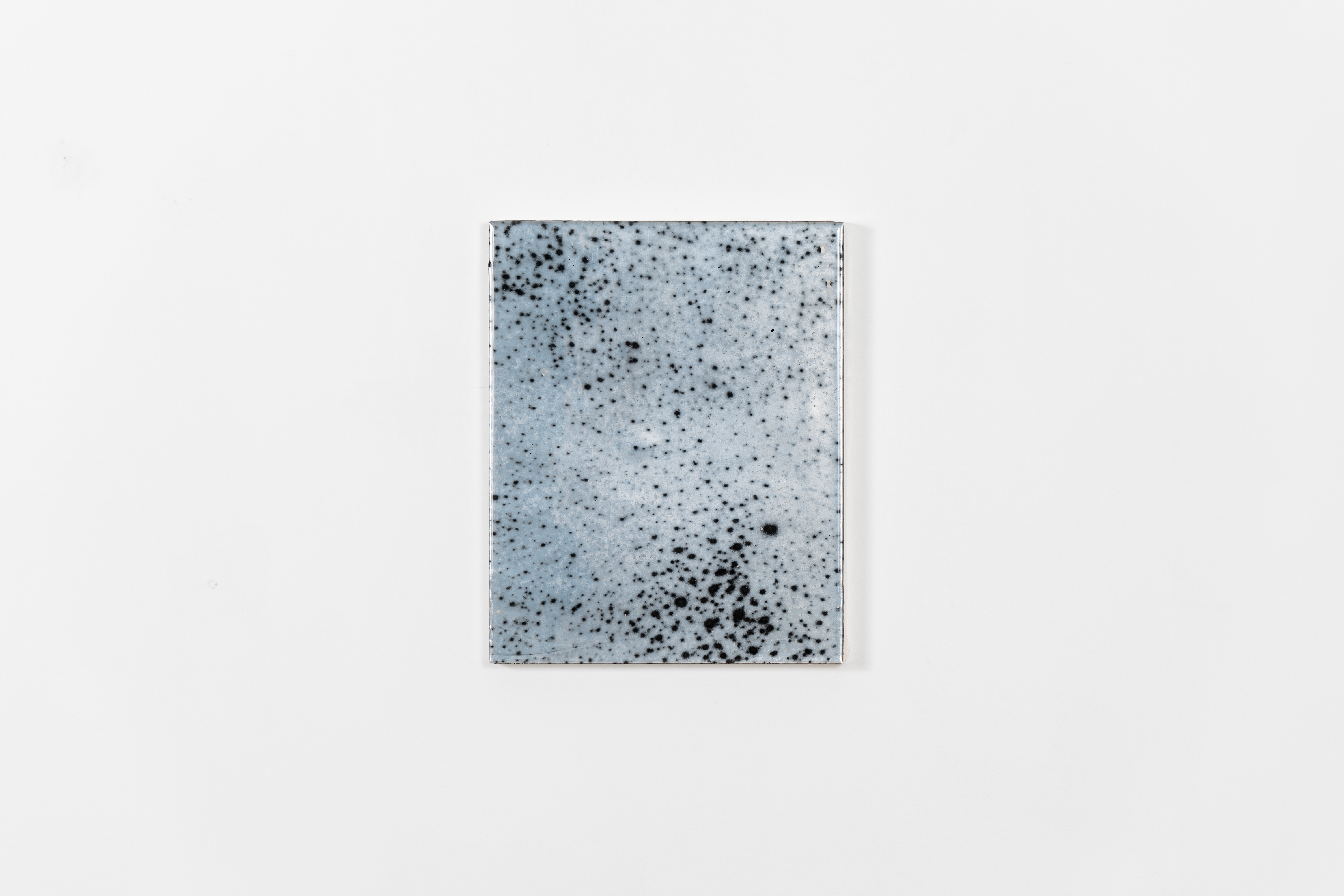
Carrie Yamaoka, ’10 by 8 (wall #3)’, 2021
[Sold]
Façades, eyes and fleeting aversions
"Façades, eyes and fleeting aversions" groups together portraits and non-portraits that contain facial traces, and allusions to a lack of faces. Do we miss seeing and feeling faces after the pandemic, or are we in fact content with seeing simply simulacra, being aware on a most superficial/super-facial level that there is a preserved sense of community? Samson Young talks in his recent projects about cocoons, and how omnipresent they are in everyday life as one becomes increasingly reliant on the casings fabricated by contemporary culture. The shells are more than protection; they also obscure our identities in vastly different fashions, as we appear and approach others. In works by Liu Xiaohui, Liu Yin, Fabien Mérelle, Wang Zhibo, Carrie Yamaoka, Yeung Hok Tak, and Zheng Zhou, one sees rocks, masks, bananas, lustrous cartoon eyes and even barks replacing faces that used to be considered genuine and authentic, turning human figures into strange creatures, or turning away completely from the perturbation that is the other's gaze.
Yeung Hok Tak's rare close-up portrait “The Green People” (2021) is about a face that functions properly, albeit strange: the senses and the possibility of perception are represented by the green bananas, squeezing a bare but discernible face out of the bunch. Passionately juxtaposing a green against a light blue that is adjacent to a deeper, casually textured blue, Yeung portrays a turtlenecked chainsmoker who also reminds one of a gatling gun. Underneath or exactly above the placid façade is a faint cloud of smoke, a sign of opening fire.
And it calls for a defence mechanism—a grafted, augmented head against another. Fabien Mérelle's early sculpture “Stone of Madness” (2014) places a stone cranium atop a realistic silicone human figure. As real as it is, it could be misconstrued as a performance wherein an artist typically torments another individual in the name of art. It is, however, static, standing perfectly still in exhibitions, attesting well to its insentience concerning its surroundings and existence. Many of Mérelle's sculptures involve stacking or combining things that are heterogeneous to one another; one of his most celebrated pieces is “Pentateuque” (2013), a man balancing a disproportionate elephant on his back, based on the titular drawing. Unlike Pentateuque, “Stone of Madness” speaks less of interspecific relationships but of one's relationship with himself, externalising what occupies his mind into a visor, at once natural-defensive and inorganic-hostile.
Wang Zhibo's “Untitled” (2022) and “Slight Resistance 2” (2022) were created in a period when the artist was preoccupied with the boundary between the figurative and the abstract. Wang has also been interested in locating the moments when the mundane reveals from itself something inexplicably and profoundly spiritual. “Untitled“ is a pseudo-self-portrait, matching the colour and texture of the artist-sitter's face and neck with the wood panels in the background; “Slight Resistance 2”, on the other hand, shows a radicalised countenance floating above an ephemeral body hinted only by a bunch of wilted flowers. One of the most remarkable differences and relationships between the two paintings is the depicted hairiness: in “Untitled”, one sees a simple and sharp hairdo, clarifying that even for this tree person grooming is necessary; in “Slight Resistance 2”, the impossible sitter becomes the fiery hair that is naturally entwined with a heart-shaped, free-floating thing. It vehemently obliterates the dichotomy between exteriority and interiority, the visage and the essence, undoing the structure that requires masks.
Liu Yin is also attentive to the messages a hairdo can convey in “The handshake” (2015). Rendering the political leaders cute and even kawaii in her signature style, Liu makes sure that the two men are unmistakable by faithfully representing the conservative hair styles they are wearing. More importantly, however, is the hair style of the repeated tiny figure in the background: he can only be identified by his hair. As playful as Liu always has been when she turns serious, stern figures into cute characters, the painting questions the generic quality of a face-mask, and the meaningfulness of the elements that adorn and contextualise an individual. What distinguishes an individual?
Making meticulously textured and highly reflective objects since the 1990s, many of Carrie Yamaoka's painting-sculpture-photograph raise similar questions. Examining her objects in reproductions, one always sees a distorted, blurred image of the artist herself taking the photo; confronting the surfaces in person, however, one sees one's own ghostly reflection. For “10 by 8 (wall #3)” (2021) and other works from what is known as the "rubbing series", Yamaoka rubs the reflective polyester film (mylar) against the walls in her studio before mounting it on a wood panel. She is interested in revealing the invisible texture and force of the walls among other things—such as sunlight and gravity—and also in uncontrollable incidents that may take place in the creative process. Setting up conditions for unexpectedness and uninvitedness, her reflective art confronts intrusions and changes faces, portraying in succession one individual after another in a way that is radically ambiguous.
In a number of his recent paintings, Zheng Zhou has been devising a project to emphasise the face by making it obscure. He plays with the desire to see and to represent a face, and is eventually satisfied with solely producing a textured, porous silhouette. Both “Girl in storm” (2021) and “Sun searing like fire” (2023) are exemplary of a particularly economical handling of his subjects, turning them into simply colour patches. However, it is evident that Zheng has a profound emotional connection to the subjects; be it the unidentified figure in Sun searing like fire or the poor girl in “Girl in storm”, Zheng ensures that they are portrayed and supported by an appropriate, decisive atmosphere, spontaneously conveying what a face might be able to express. One hot, one cold—the two figures are equally under the weather and are exactly covered and made up by the weather, pertaining to a facelessness that is universal in essence.
Lastly, concluding "Façades, eyes and fleeting aversions", Liu Xiaohui's tempera “Night by the Sea” (2023) turns away (again) from all. The reappearance of the female figure in this work seems complicated, because the volume of her presence is stronger than she typically is in a larger painting; the painted frame echoes the female figure's white dress in colour, and also emphasises the peculiarity of the figure: she is too tarnished to be true. Turned away but not in a hurry to exit the picture—doesn't want to be replaced by an abstract absence, doesn't want to be face-ful neither—she suggests a way out of the obsession with faces, a scenario in which one can ultimately re-associate the absence of a face with a sense of security, and a face with aversion.

[Sold]
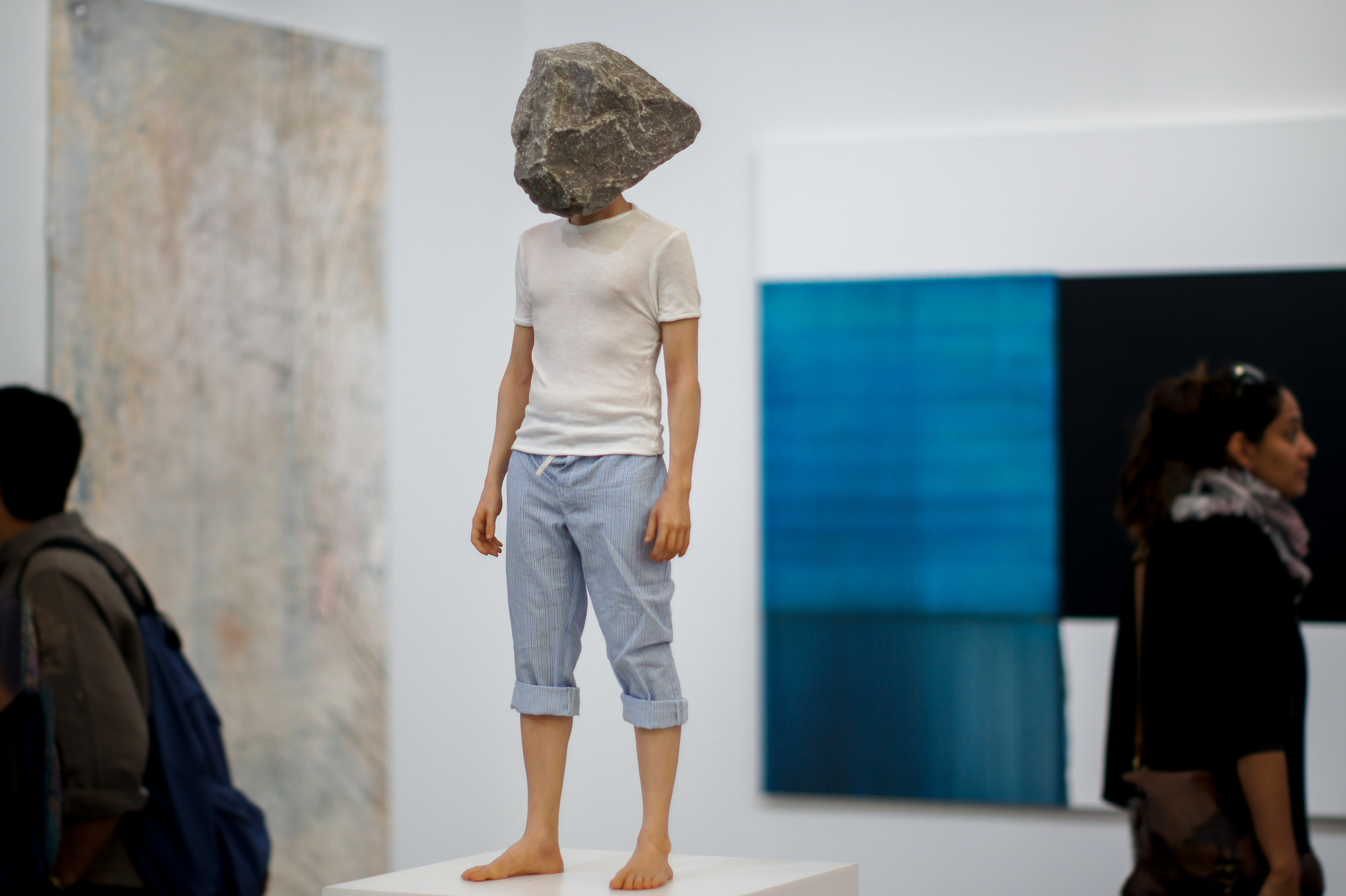
[HK$500,000.00]
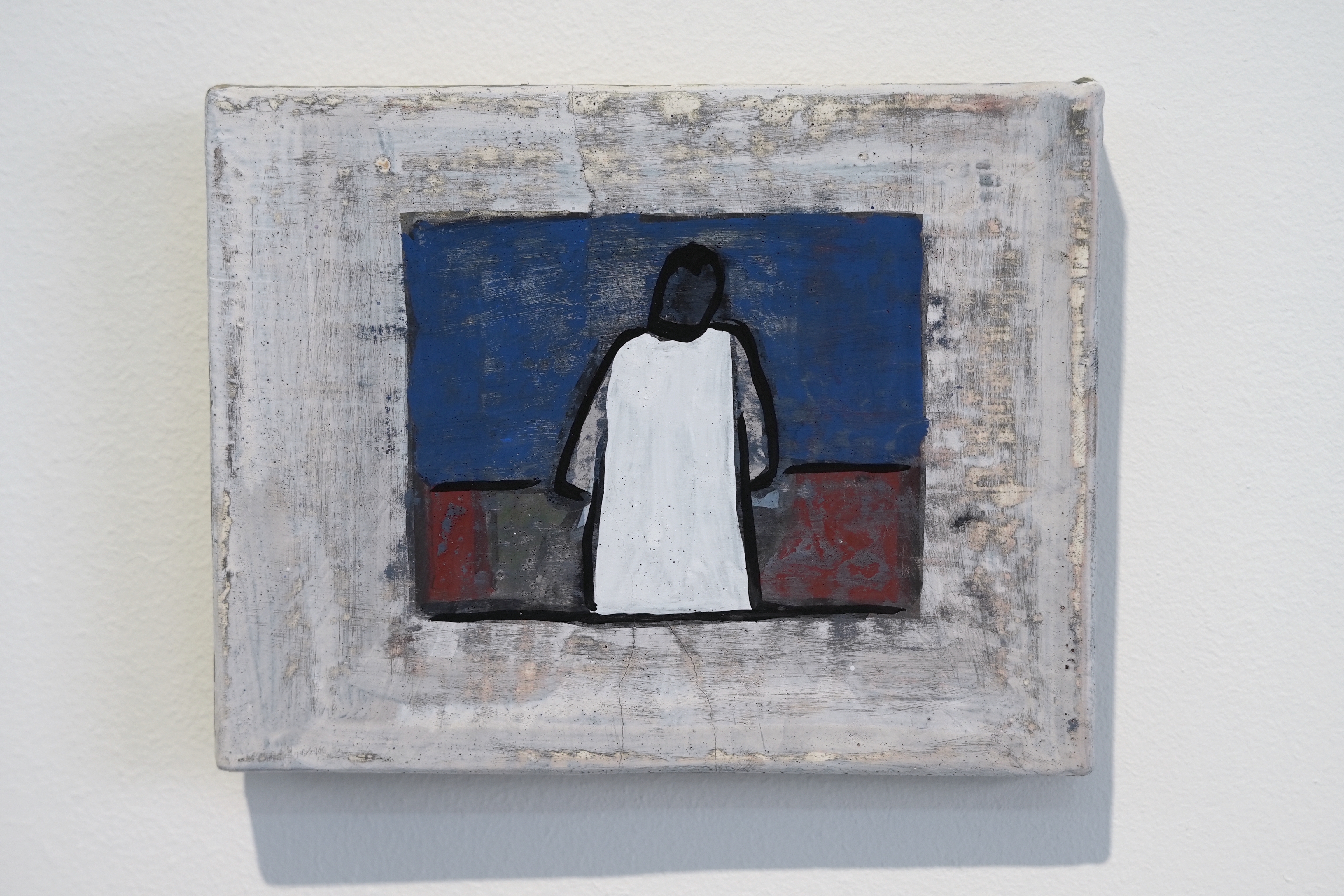
[Sold]
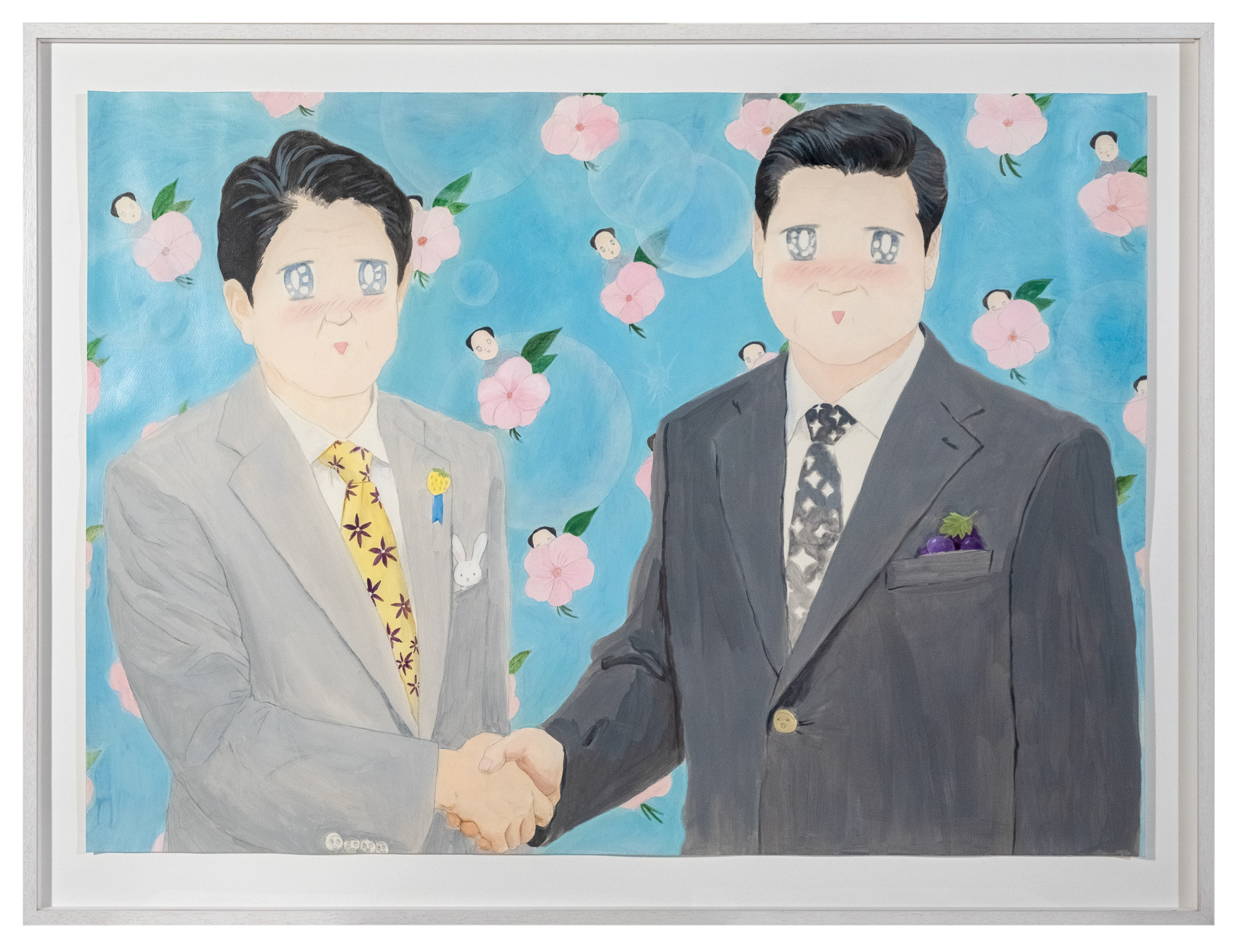
[HK$57,000.00]
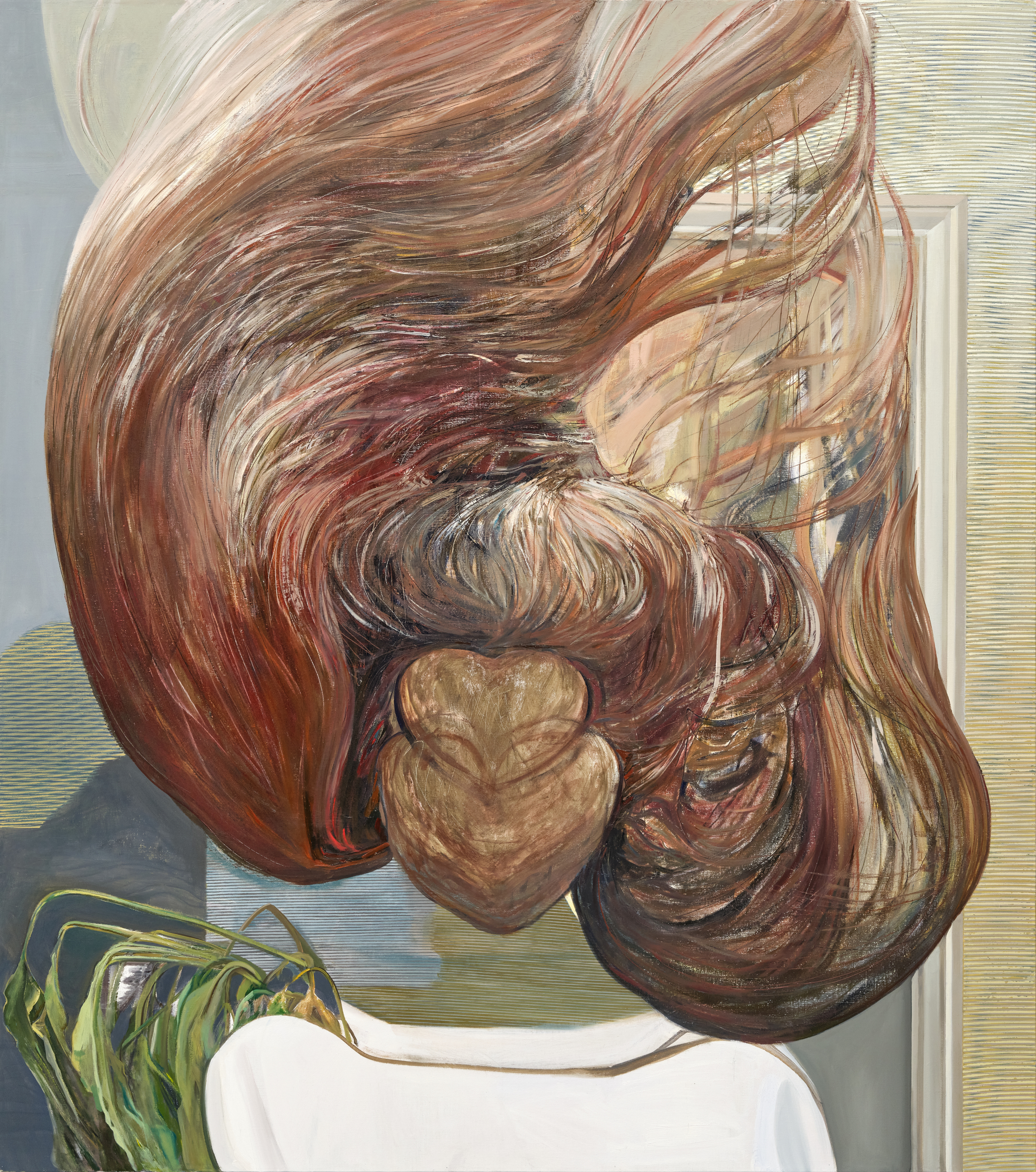
[Sold]
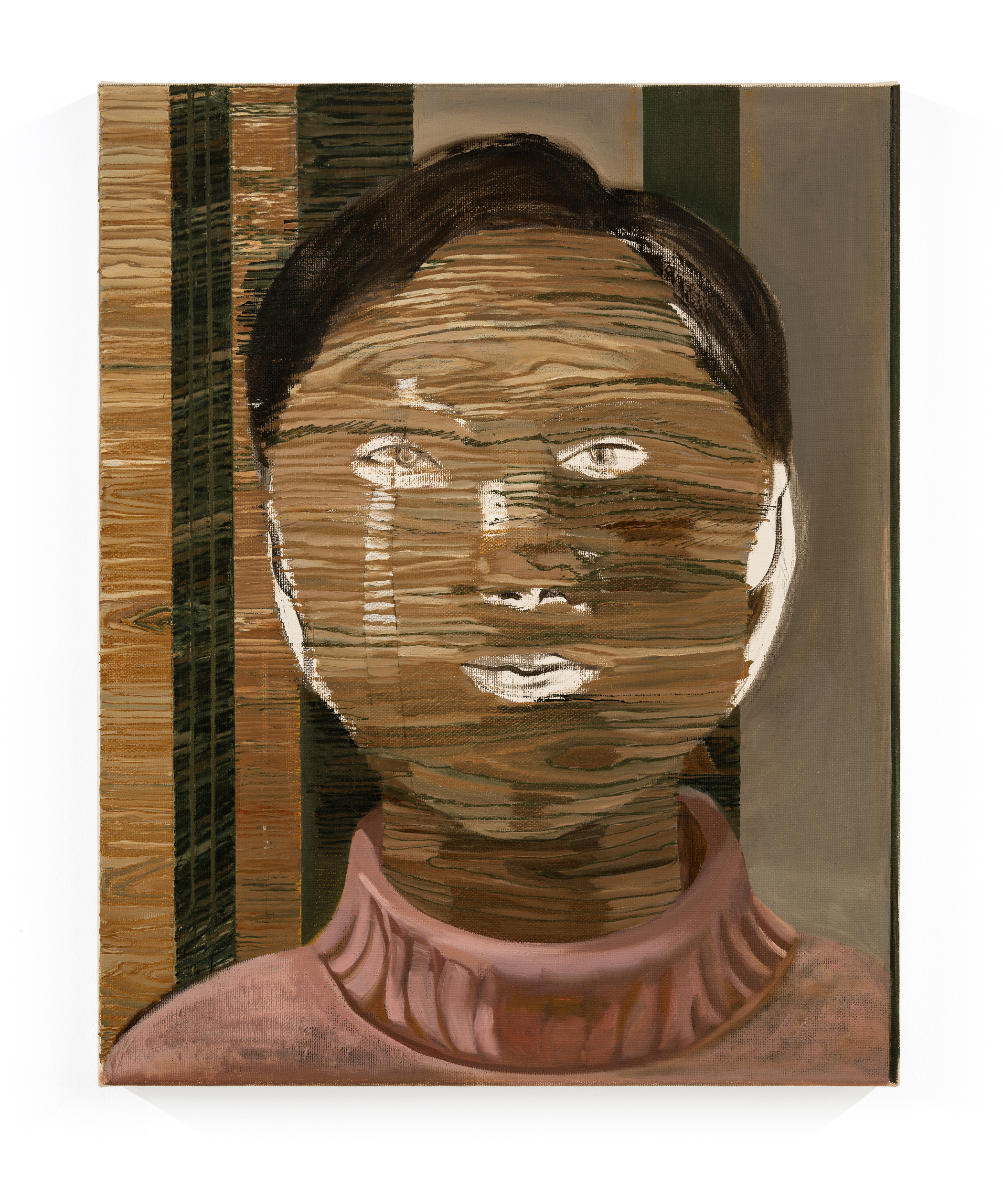
[HK$63,000.00]
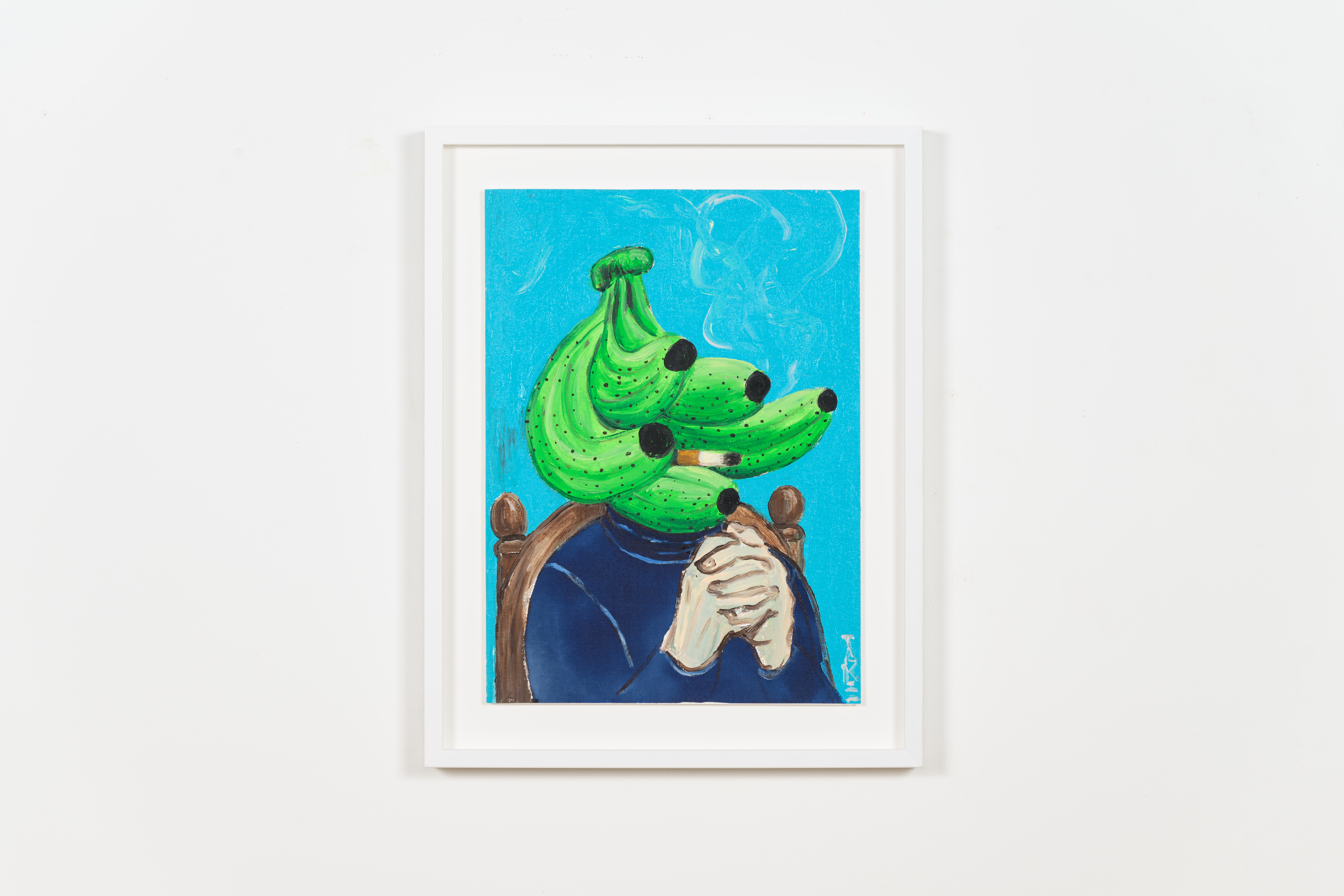
[HK$38,000.00]
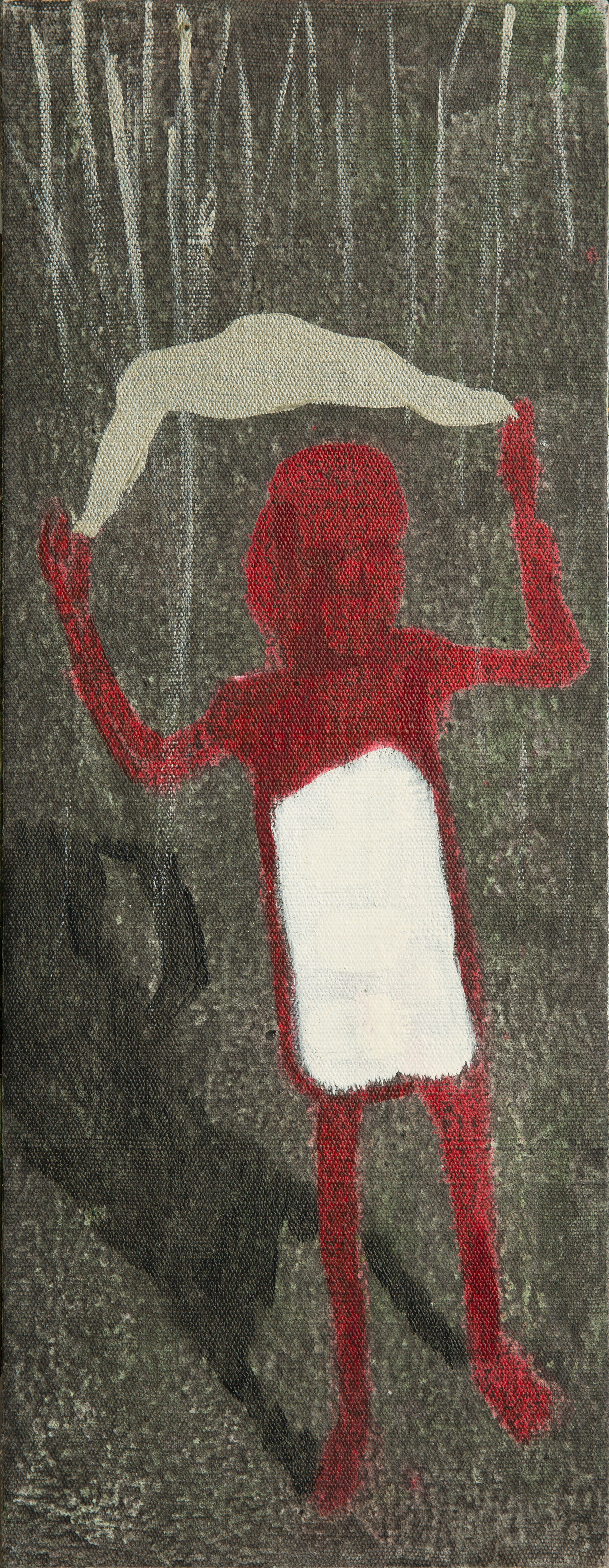
[HK$45,000.00]
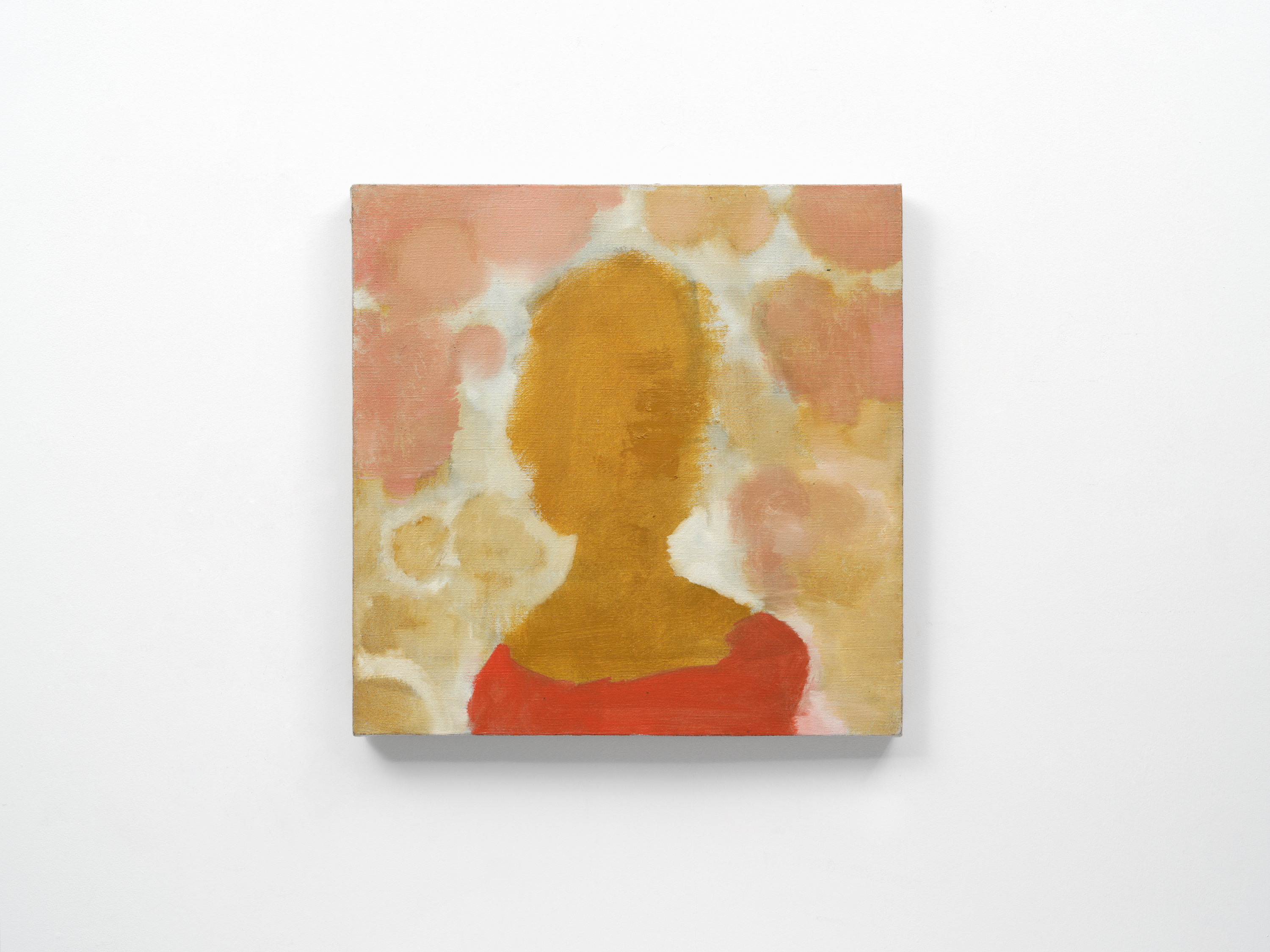
[Sold]